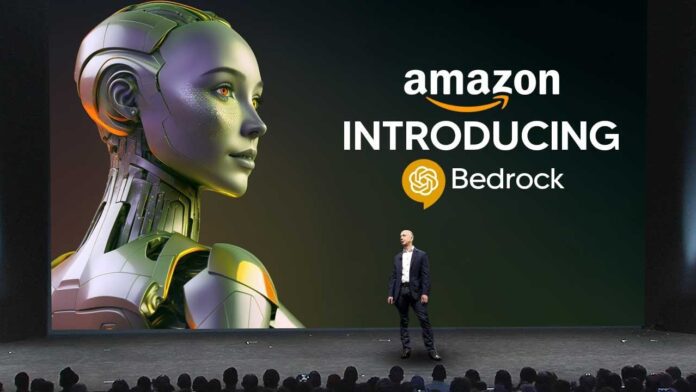Introduction
Amazon, a leading player in the tech industry, has recently announced the general availability of its groundbreaking service, Bedrock. This service offers a diverse selection of generative AI models from Amazon itself and third-party partners via an API. Bedrock’s versatility empowers AWS customers to create AI-driven applications, customize them with proprietary data, and develop AI “agents” capable of automating tasks across various domains. This article delves into the details of Amazon’s Bedrock, its integration with the open-source large language model Llama 2, and how it aims to redefine the generative AI landscape.
The Evolution of Bedrock
Bedrock was unveiled by Amazon in early April, and it has quickly evolved into a pivotal service within the AWS ecosystem. This platform enables AWS customers to harness generative AI models and adapt them to their unique requirements. By combining these models with proprietary data, brands and developers can craft AI “agents” designed to perform tasks such as travel bookings, inventory management, and insurance claim processing. Bedrock represents a significant step forward in democratizing the capabilities of generative AI.
Llama 2: The Latest Addition to Bedrock
In the coming weeks, Bedrock is set to welcome Llama 2, an open-source large language model developed by Meta. This addition brings the extensive capabilities of Llama 2, available in both 13-billion- and 70-billion-parameter variants, to the Bedrock ecosystem. Amazon asserts that Bedrock will be the first “fully managed generative AI service” to provide access to Llama 2, marking a significant milestone in the platform’s evolution.
A Comparison with Competing Platforms
While Bedrock shares similarities with other cloud-hosted generative AI platforms like Google’s Vertex AI, it offers distinct advantages. One key differentiator is its seamless integration with existing AWS services, including AWS PrivateLink, facilitating secure connections between Bedrock and a company’s virtual private cloud. This integration enhances data privacy and security while ensuring a smooth experience for AWS customers.
Swami Sivasubramanian’s Perspective
Swami Sivasubramanian, Vice President of Data and AI at AWS, underscores the significance of Bedrock’s launch. He emphasizes that the proliferation of data, scalable compute resources, and advancements in machine learning have fueled growing interest in generative AI. Sivasubramanian believes that Bedrock’s accessibility, from startups to enterprises and developers to data analysts, marks a significant milestone in making generative AI accessible to all businesses and professionals.
Overcoming Initial Challenges
It’s worth noting that Bedrock faced initial challenges. A Bloomberg report in May revealed that six weeks after Amazon’s initial Bedrock demonstration, most cloud customers still did not have access to the service. However, with its recent announcements and substantial investments in AI startup Anthropic, Amazon is making strides in the generative AI market. This move signals Amazon’s commitment to becoming a prominent player in this rapidly growing and lucrative field.
Amazon’s Titan Embeddings Model
In a related development, Amazon has introduced the Titan Embeddings model. This first-party model is designed to convert text into numerical representations, known as embeddings, which power search and personalization applications. The Titan Embeddings model boasts support for approximately 25 languages and can handle text chunks or entire documents with up to 8,192 tokens, equivalent to approximately 6,000 words. This places it on par with the latest embeddings model from OpenAI, highlighting Amazon’s dedication to advancing natural language processing capabilities.
Conclusion
Amazon’s Bedrock service has emerged as a game-changer in the world of generative AI. Its integration of Llama 2, seamless compatibility with existing AWS services, and democratization of generative AI capabilities position it as a formidable player in the market. While initial challenges existed, Amazon’s commitment to innovation and investment in AI technologies like Bedrock and the Titan Embeddings model underscore its ambition to shape the future of generative AI. As this technology continues to evolve, businesses and developers can expect to unlock new possibilities and efficiencies in various domains, thanks to Amazon’s pioneering efforts in generative AI.










